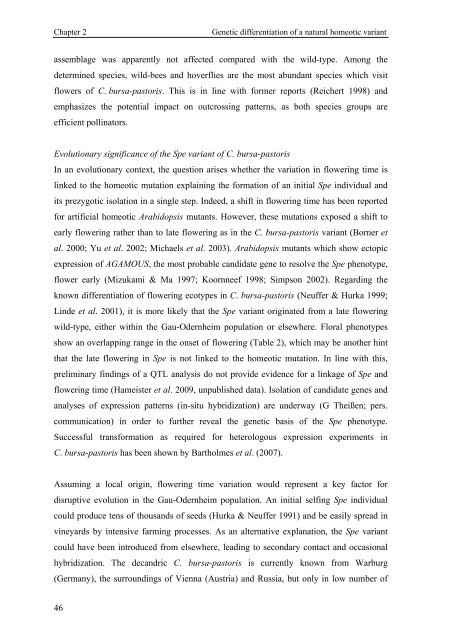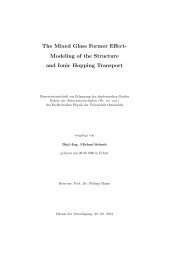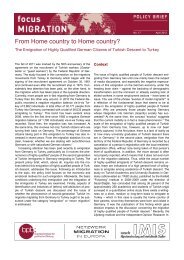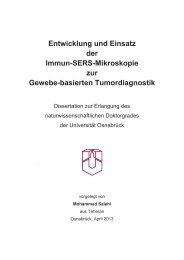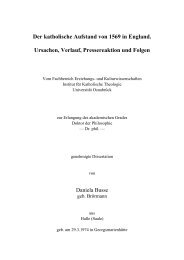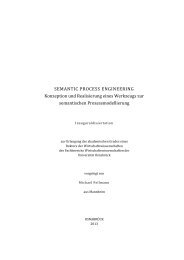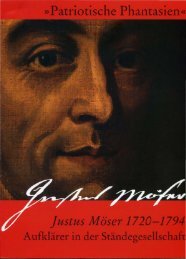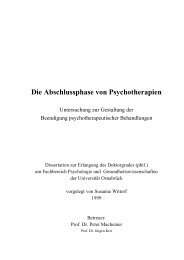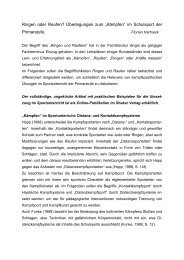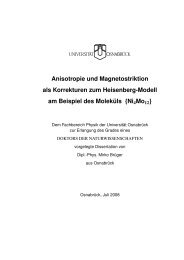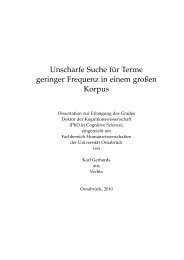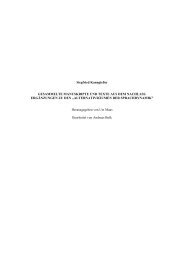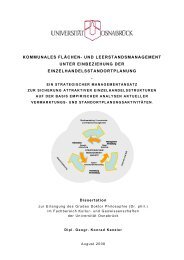'STAMENOID PETALS' IN A NATURAL HOMEOTIC VARIANT OF
'STAMENOID PETALS' IN A NATURAL HOMEOTIC VARIANT OF
'STAMENOID PETALS' IN A NATURAL HOMEOTIC VARIANT OF
Create successful ePaper yourself
Turn your PDF publications into a flip-book with our unique Google optimized e-Paper software.
Chapter 2 Genetic differentiation of a natural homeotic variant<br />
assemblage was apparently not affected compared with the wild-type. Among the<br />
determined species, wild-bees and hoverflies are the most abundant species which visit<br />
flowers of C. bursa-pastoris. This is in line with former reports (Reichert 1998) and<br />
emphasizes the potential impact on outcrossing patterns, as both species groups are<br />
efficient pollinators.<br />
Evolutionary significance of the Spe variant of C. bursa-pastoris<br />
In an evolutionary context, the question arises whether the variation in flowering time is<br />
linked to the homeotic mutation explaining the formation of an initial Spe individual and<br />
its prezygotic isolation in a single step. Indeed, a shift in flowering time has been reported<br />
for artificial homeotic Arabidopsis mutants. However, these mutations exposed a shift to<br />
early flowering rather than to late flowering as in the C. bursa-pastoris variant (Borner et<br />
al. 2000; Yu et al. 2002; Michaels et al. 2003). Arabidopsis mutants which show ectopic<br />
expression of AGAMOUS, the most probable candidate gene to resolve the Spe phenotype,<br />
flower early (Mizukami & Ma 1997; Koornneef 1998; Simpson 2002). Regarding the<br />
known differentiation of flowering ecotypes in C. bursa-pastoris (Neuffer & Hurka 1999;<br />
Linde et al. 2001), it is more likely that the Spe variant originated from a late flowering<br />
wild-type, either within the Gau-Odernheim population or elsewhere. Floral phenotypes<br />
show an overlapping range in the onset of flowering (Table 2), which may be another hint<br />
that the late flowering in Spe is not linked to the homeotic mutation. In line with this,<br />
preliminary findings of a QTL analysis do not provide evidence for a linkage of Spe and<br />
flowering time (Hameister et al. 2009, unpublished data). Isolation of candidate genes and<br />
analyses of expression patterns (in-situ hybridization) are underway (G Theißen; pers.<br />
communication) in order to further reveal the genetic basis of the Spe phenotype.<br />
Successful transformation as required for heterologous expression experiments in<br />
C. bursa-pastoris has been shown by Bartholmes et al. (2007).<br />
Assuming a local origin, flowering time variation would represent a key factor for<br />
disruptive evolution in the Gau-Odernheim population. An initial selfing Spe individual<br />
could produce tens of thousands of seeds (Hurka & Neuffer 1991) and be easily spread in<br />
vineyards by intensive farming processes. As an alternative explanation, the Spe variant<br />
could have been introduced from elsewhere, leading to secondary contact and occasional<br />
hybridization. The decandric C. bursa-pastoris is currently known from Warburg<br />
(Germany), the surroundings of Vienna (Austria) and Russia, but only in low number of<br />
46


